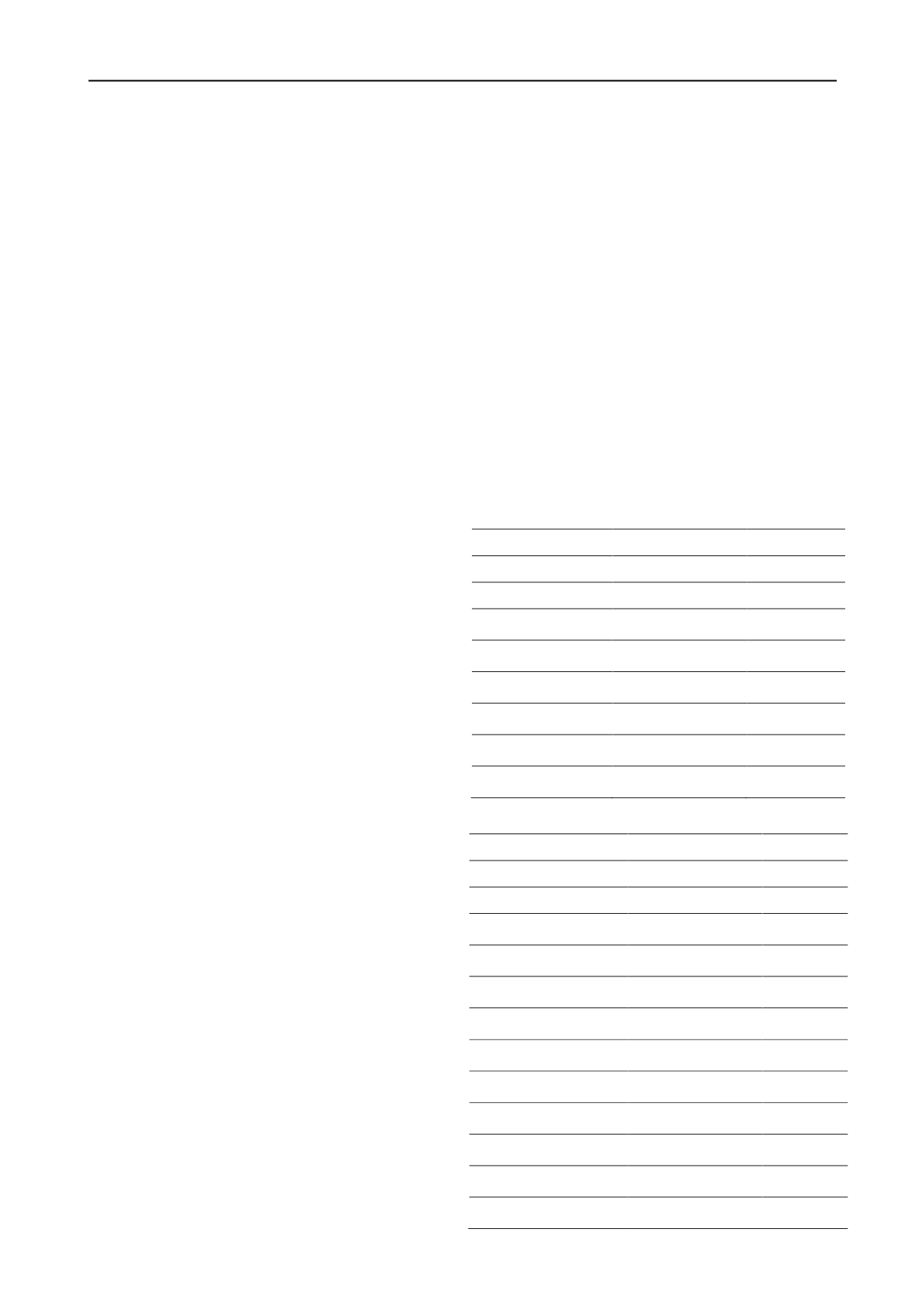
3192
Proceedings of the 18
th
International Conference on Soil Mechanics and Geotechnical Engineering, Paris 2013
Proceedings of the 18
th
International Conference on Soil Mechanics and Geotechnical Engineering, Paris 2013
2
represents an interesting opportunity for the future reuse of non-
contaminated dredged materials.
On the other hand, dredged sediments are often polluted
with contaminants, such as heavy metals (Singh et al. 2000,
Mulligan et al. 2001, Peng et al. 2009). Methods to remove said
metals from dredged sediment (Mulligan et al. 2001, Meegoda
and Ruvini 2001, Bradl 2005, Peng et al. 2009) might be
cumbersome and expensive. Therefore, alternative methods
resulting in dredged sediments that retain heavy metals are
highly needed.
Mazzieri et al. (2010) compared a polymer amended GCL
with a conventional GCL permeated with a synthetic metal-rich
acidic solution in order to compare the hydraulic, buffering and
contaminant retention properties of the GCL materials. The
breakthrough of metals occurred much earlier in the untreated
GCL than in the polymer treated GCL, which was able to retain
metals more effectively. Further insights are required to better
understand the mobility of heavy metals in polymer treated
clays and the ability of such clays to retain the heavy metals in
the long-term.
This study involves the treatment of kaolin clay (as
reference material) and dredged sediments with different
percentages of an anionic polymer, Na-CMC (Sodium
CarboxyMethyl Cellulose). This treatment is meant to improve
their hydraulic performance as a lining material. This paper
shows preliminary results (using MgCl
2
and sea water as
reference solutions) to study the effects on both the hydraulic
conductivity and the adsorption characteristics of polymer
treated clays, such as kaolin and dredged sediments. The
adsorption on polymer treated clays of heavy metals such as Zn,
Cu and Pb is currently under investigation.
2 MATERIALS
A commercial processed kaolin Rotoclay® HB (Goonvean, St.
Austell, UK) and a dredged sediment (DS) were used in this
investigation. The kaolin was chosen as reference material
because it has been largely used in previous laboratory research.
The dredged sediment was obtained from Kluizendok in Ghent,
Belgium. Table 1 shows some properties of the base materials
used in this research. Both materials were treated with an
anionic polymer, Sodium CarboxyMethylCellulose (Na-CMC)
using different polymer dosages (2% and 8%) by dry weight of
soil. The treatment consists of pouring a soil in a polymeric
solution using a mechanical stirrer. The slurries obtained are
then oven dried. After drying, the soils are ground using a
mortar grinder (Di Emidio, 2010, 2012).
Deionised water, produced using a water purification
system, was used as reference solution. A reference electrolyte
compound, MgCl
2
, was used for preliminary batch sorption
tests on the treated and untreated soils. The electrolyte solutions
were prepared by dissolving salts in deionised water. Moreover,
natural seawater from the North Sea (near Oostende in
Belgium) was used as permeant solution for the hydraulic
conductivity tests on the treated and untreated soils. Table 2 and
3 show the chemical characteristics of deionized water and
seawater.
3 METHODS
3.1
Batch sorption test
To study the adsorption of MgCl
2
on the treated and untreated
soils, batch sorption tests were performed following the ASTM
D4646. Different concentrations of MgCl
2
were used to prepare
the equilibrium solutions for the batch sorption test. The
untreated and treated soils were mixed for 24 hours in a rotatory
table with MgCl
2
solutions of different concentrations (100
mg/l, 600 mg/l, 2000 mg/l, 6000 mg/l), using a soil-to-solution
ratio 1:4. Then the slurries were separated by centrifugation. A
centrifugation speed of 3000 rpm was sufficient to separate
untreated soils from the solution, whereas a centrifugation speed
of 10000 rpm was necessary to separate the treated soils from
the solution. The sorption isotherms were obtained by plotting
the sorbed mass of Mg
2+
and Cl
-
(meq/100g of soil, measured
with a Spectroquant Photometer) vs. the equilibrium MgCl
2
concentration.
Table 1. Properties of the materials analyzed
Parameter
kaolin
DS
Type / source
Rotoclay®/Austell
Kluizendok
Specific gravity (-)
2.64
2.75
Liquid Limit (-)
59.0
44.1
Plastic Limit (-)
38.0
27.1
Swell index (ml/2g)
3.71
2.29
Silt content (%)
62.4
49.3
Clay content (%)
35.3
5.0
Sand content (%)
0.0
45.7
Table 2. Chemical analysis of the solutions used
Parameter
Deionized water
Seawater
EC
(mS/cm)
0.0039
49.9
Salinity (-)
0.0
32.4
pH (-)
7.57
7.78
Na
+
(M)
-
0.455
K
+
(M)
-
0.012
Mg
2+
(M)
-
0.053
Ca
2+
(M)
-
0.012
Cl
-
(M)
-
0.561
SO
4
2-
(M)
-
0.024
HCO
3
-
(M)
-
0.003
CO
3
2-
(M)
-
0.0003
NO
3
-
(M)
-
0.0007


